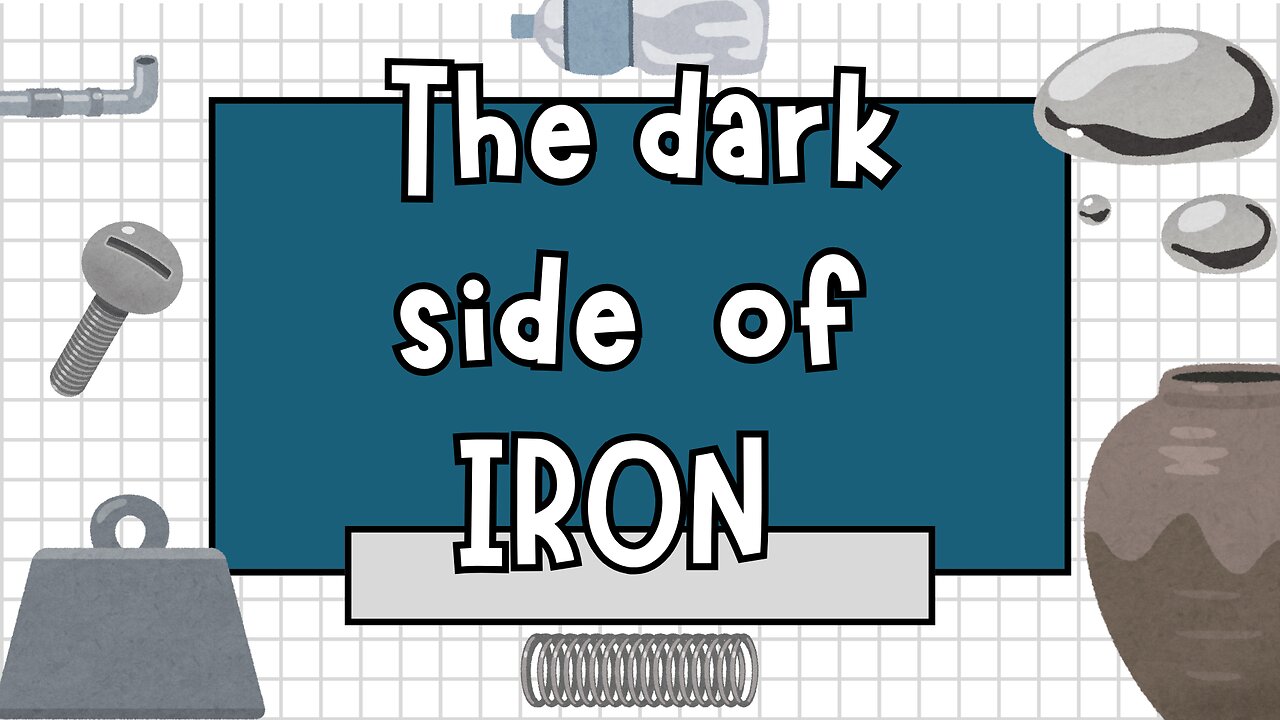Premium Only Content

the dark side of IRON
Iron Toxicity: Causes, Symptoms, Risks, and Treatment
Iron toxicity, also known as iron poisoning or iron overload, occurs when excess iron accumulates in the body beyond its ability to store and regulate safely. While iron is an essential mineral for oxygen transport, energy production, and immune function, high levels can become toxic and damage vital organs. Iron toxicity may result from acute overdose (such as accidental ingestion of iron supplements) or chronic iron overload conditions like hemochromatosis, frequent blood transfusions, or excessive supplementation.
Common symptoms of iron toxicity include abdominal pain, nausea, vomiting, diarrhea, dehydration, and fatigue. Severe cases may lead to liver damage, heart complications, diabetes, metabolic disturbances, and in extreme situations, organ failure. Children are particularly at risk of acute iron poisoning from accidental supplement ingestion, making safe storage essential.
Diagnosis often involves blood tests measuring serum ferritin, transferrin saturation, and liver function markers. Treatment options depend on severity and may include gastric lavage, chelation therapy with agents like deferoxamine, phlebotomy (in chronic cases), and strict dietary management to reduce iron intake.
Preventing iron toxicity requires careful supplement use, medical monitoring in at-risk individuals, and awareness of genetic conditions that predispose to iron overload. Managing iron levels not only prevents organ damage but also supports long-term metabolic and cardiovascular health.
---
✅ SEO Keywords & LSI Variations:
iron toxicity, iron overload, iron poisoning, high iron levels, iron supplement overdose, symptoms of iron toxicity, hemochromatosis, iron chelation therapy, excess iron risks, iron toxicity treatment.
-
 LIVE
LIVE
LadyDesireeMusic
49 minutes agoShort Morning Stream
433 watching -
 LIVE
LIVE
The Chris Salcedo Show
11 hours agoPresident Trump Winning Despite Court's Corruption
577 watching -
 19:58
19:58
BlaireWhite
1 day agoThey're Lying About Charlie Kirk's Assassin, Tyler Robinson.
35912 -
 LIVE
LIVE
Game On!
19 hours ago $0.93 earnedNFL Week 11 Early DEEP DIVE And BEST BETS!
127 watching -
 1:04:13
1:04:13
Crypto Power Hour
13 hours ago $7.03 earnedIn The Blockchain World,, What Is TOKEN MINTING
29.1K9 -
 LIVE
LIVE
BEK TV
2 hours agoTrent Loos in the Morning - 11/12/2025
105 watching -
 17:23
17:23
T-SPLY
12 hours agoThousands Of ICE Watch Kits Passed Out In Chicago!
14.5K16 -
 25:09
25:09
Jasmin Laine
18 hours agoReporter CATCHES Carney Red-Handed—Liberal MP SNAPS in Public MELTDOWN
13.7K34 -
 9:05
9:05
Adam Does Movies
16 hours ago $1.90 earnedIT: Welcome To Derry Episode 3 - Recap
13.1K -
 14:43
14:43
Producer Michael
18 hours agoBILLION DOLLAR GOLD MOGUL'S PRIVATE WATCH COLLECTION
11.3K